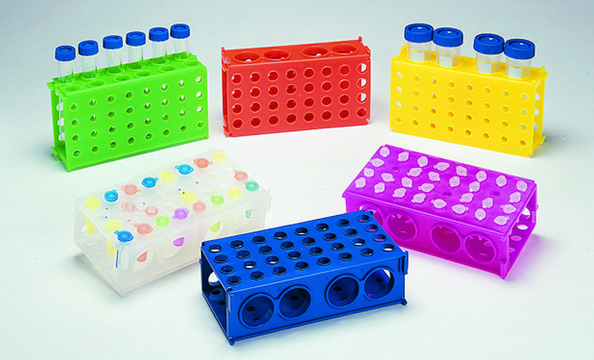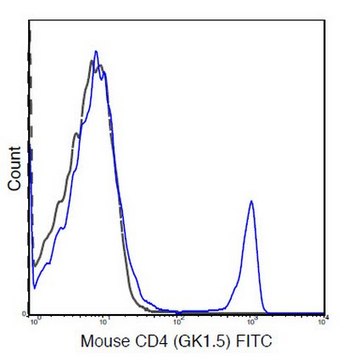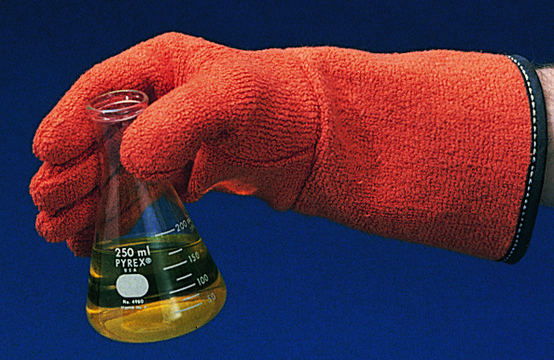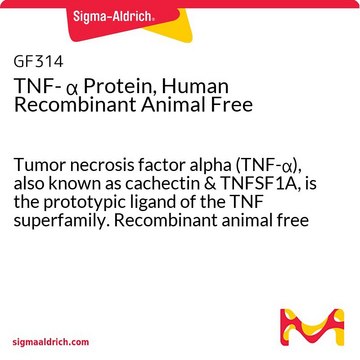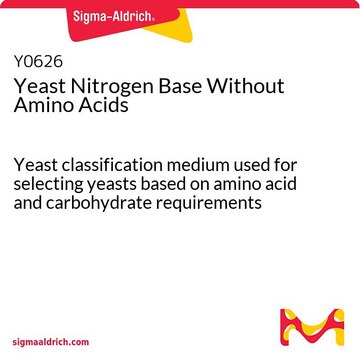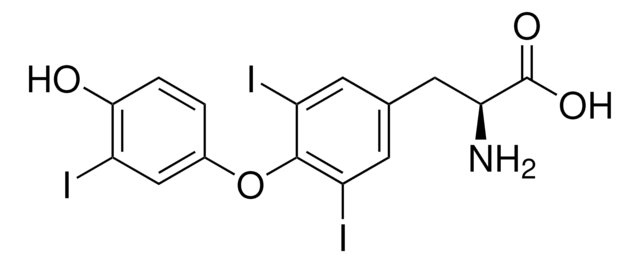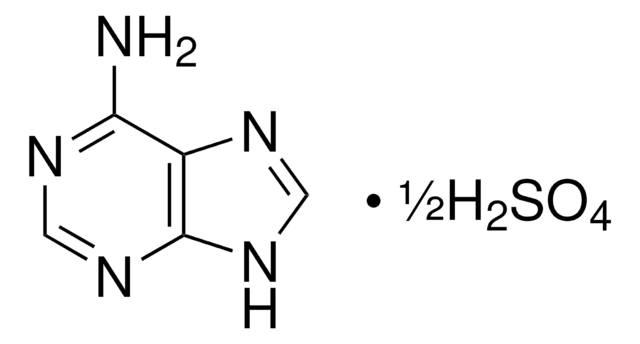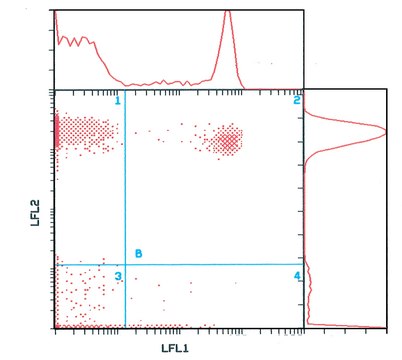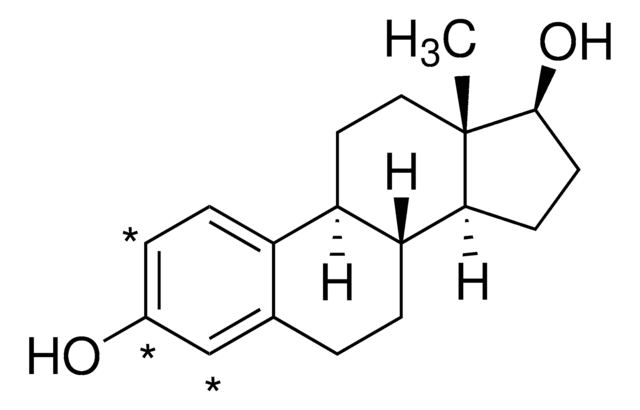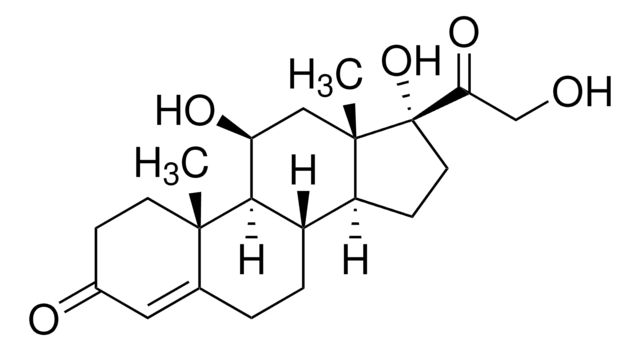P7562
Monoclonal Anti-CD4−PE antibody produced in mouse
clone Q4120, purified immunoglobulin, buffered aqueous solution
Synonym(s):
Monoclonal Anti-CD4
Sign Into View Organizational & Contract Pricing
All Photos(1)
About This Item
UNSPSC Code:
12352203
Recommended Products
biological source
mouse
Quality Level
conjugate
unconjugated
antibody form
purified immunoglobulin
antibody product type
primary antibodies
clone
Q4120, monoclonal
form
buffered aqueous solution
mol wt
antigen 59 kDa
species reactivity
human
technique(s)
flow cytometry: 10 μL using 1 × 106 cells
isotype
IgG1
UniProt accession no.
shipped in
wet ice
storage temp.
2-8°C
target post-translational modification
unmodified
Gene Information
human ... CD4(920)
Looking for similar products? Visit Product Comparison Guide
Specificity
Recognizes the CD4. The epitope recognized by the Q4120 clone is located on 1-183 aa and is sensitive to formalin fixation and paraffin embedding. 5th Workshop: code no. CD04.11
Immunogen
CD4-transfected mouse T-cell hybridoma, 3DT, followed by CD4+ human T-cell CEM cells.
Target description
CD4 is a single chain transmembraneous glycoprotein from the immunoglobulin superfamily. It is expressed on the helper/inducer T subset, on most medullary thymocytes, on microglial, dendritic and on some malignancies of T cell origin. The antigen binds to MHC class II molecules and is associated with p56lck protein tyrosine kinase.
Physical form
Solution in 0.01 M phosphate buffered saline, pH 7.4, containing 1% bovine serum albumin and 15 mM sodium azide.
Preparation Note
Prepared by conjugation to R-phycoerythrin (PE). This orange-red dye is efficiently excited at 488 nm and emits at 578 nm.
Disclaimer
Unless otherwise stated in our catalog or other company documentation accompanying the product(s), our products are intended for research use only and are not to be used for any other purpose, which includes but is not limited to, unauthorized commercial uses, in vitro diagnostic uses, ex vivo or in vivo therapeutic uses or any type of consumption or application to humans or animals.
Not finding the right product?
Try our Product Selector Tool.
Storage Class Code
12 - Non Combustible Liquids
WGK
nwg
Flash Point(F)
Not applicable
Flash Point(C)
Not applicable
Regulatory Information
新产品
Choose from one of the most recent versions:
Already Own This Product?
Find documentation for the products that you have recently purchased in the Document Library.
David Beauparlant et al.
PLoS pathogens, 13(3), e1006255-e1006255 (2017-03-07)
A hallmark of HIV-1 infection is the continuously declining number of the virus' predominant target cells, activated CD4+ T cells. With diminishing CD4+ T cell levels, the capacity to utilize alternate cell types and receptors, including cells that express low
Analysis of endoplasmic reticulum trafficking signals by combinatorial screening in mammalian cells.
N Zerangue et al.
Proceedings of the National Academy of Sciences of the United States of America, 98(5), 2431-2436 (2001-02-28)
To improve the accuracy of predicting membrane protein sorting signals, we developed a general methodology for defining trafficking signal consensus sequences in the environment of the living cell. Our approach uses retroviral gene transfer to create combinatorial expression libraries of
Mikhail A Zhukovsky et al.
PloS one, 5(10), e13249-e13249 (2010-10-23)
The entry of human immunodeficiency virus (HIV-1) into host cells involves the interaction of the viral exterior envelope glycoprotein, gp120, and receptors on the target cell. The HIV-1 receptors are CD4 and one of two chemokine receptors, CCR5 or CXCR4.
N D Collins et al.
Journal of virology, 73(11), 9642-9649 (1999-10-09)
Human T-cell lymphotropic virus type 1 (HTLV-1), a complex retrovirus, encodes a hydrophobic 12-kD protein from pX open reading frame (ORF) I that localizes to cellular endomembranes and contains four minimal SH3 binding motifs (PXXP). We have demonstrated the importance
Our team of scientists has experience in all areas of research including Life Science, Material Science, Chemical Synthesis, Chromatography, Analytical and many others.
Contact Technical Service